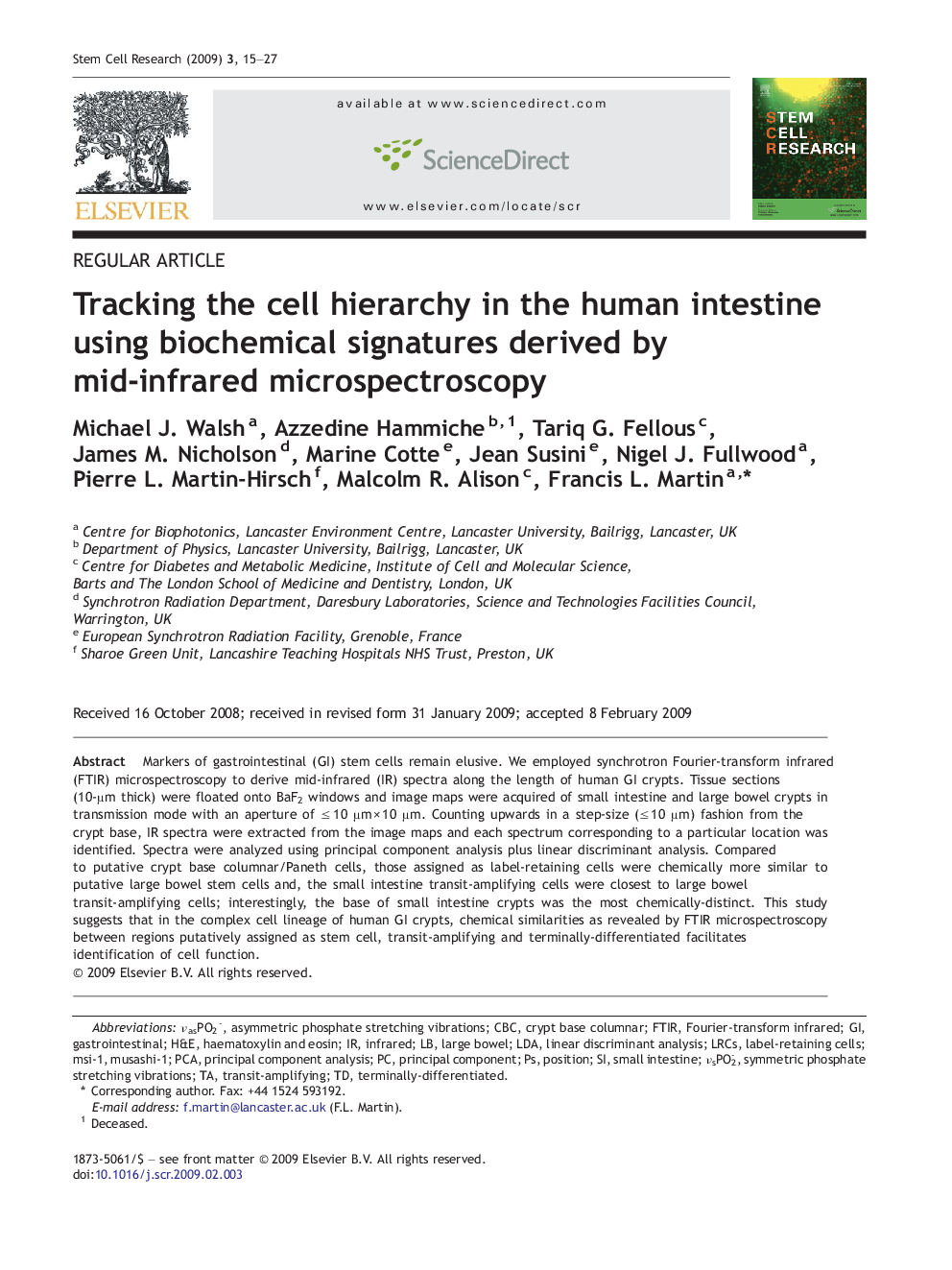| Article ID | Journal | Published Year | Pages | File Type |
|---|---|---|---|---|
| 10891440 | Stem Cell Research | 2009 | 13 Pages |
Abstract
Markers of gastrointestinal (GI) stem cells remain elusive. We employed synchrotron Fourier-transform infrared (FTIR) microspectroscopy to derive mid-infrared (IR) spectra along the length of human GI crypts. Tissue sections (10-μm thick) were floated onto BaF2 windows and image maps were acquired of small intestine and large bowel crypts in transmission mode with an aperture of â¤Â  10 μm Ã 10 μm. Counting upwards in a step-size (â¤Â 10 μm) fashion from the crypt base, IR spectra were extracted from the image maps and each spectrum corresponding to a particular location was identified. Spectra were analyzed using principal component analysis plus linear discriminant analysis. Compared to putative crypt base columnar/Paneth cells, those assigned as label-retaining cells were chemically more similar to putative large bowel stem cells and, the small intestine transit-amplifying cells were closest to large bowel transit-amplifying cells; interestingly, the base of small intestine crypts was the most chemically-distinct. This study suggests that in the complex cell lineage of human GI crypts, chemical similarities as revealed by FTIR microspectroscopy between regions putatively assigned as stem cell, transit-amplifying and terminally-differentiated facilitates identification of cell function.
Keywords
Related Topics
Life Sciences
Biochemistry, Genetics and Molecular Biology
Biotechnology
Authors
Michael J. Walsh, Azzedine Hammiche, Tariq G. Fellous, James M. Nicholson, Marine Cotte, Jean Susini, Nigel J. Fullwood, Pierre L. Martin-Hirsch, Malcolm R. Alison, Francis L. Martin,
